Abstract
Forty-three strains of scotochromogenic mycobacteria with little saccharolytic activity have been studied in cultural, biochemical and immunodiffusion tests. They were found to belong to 3 species and 2 strains remained unidentified. The species were M. gordonae, M. marianum and M. avium. Although serologically quite distinct, they were less easily separable by cultural and biochemical tests. Of the 7 clinically significant isolates studied 6 were M. marianum and one remained unidentified. The nomenclature of these organisms and of their separation from other mycobacterial species are discussed.
Full text
PDF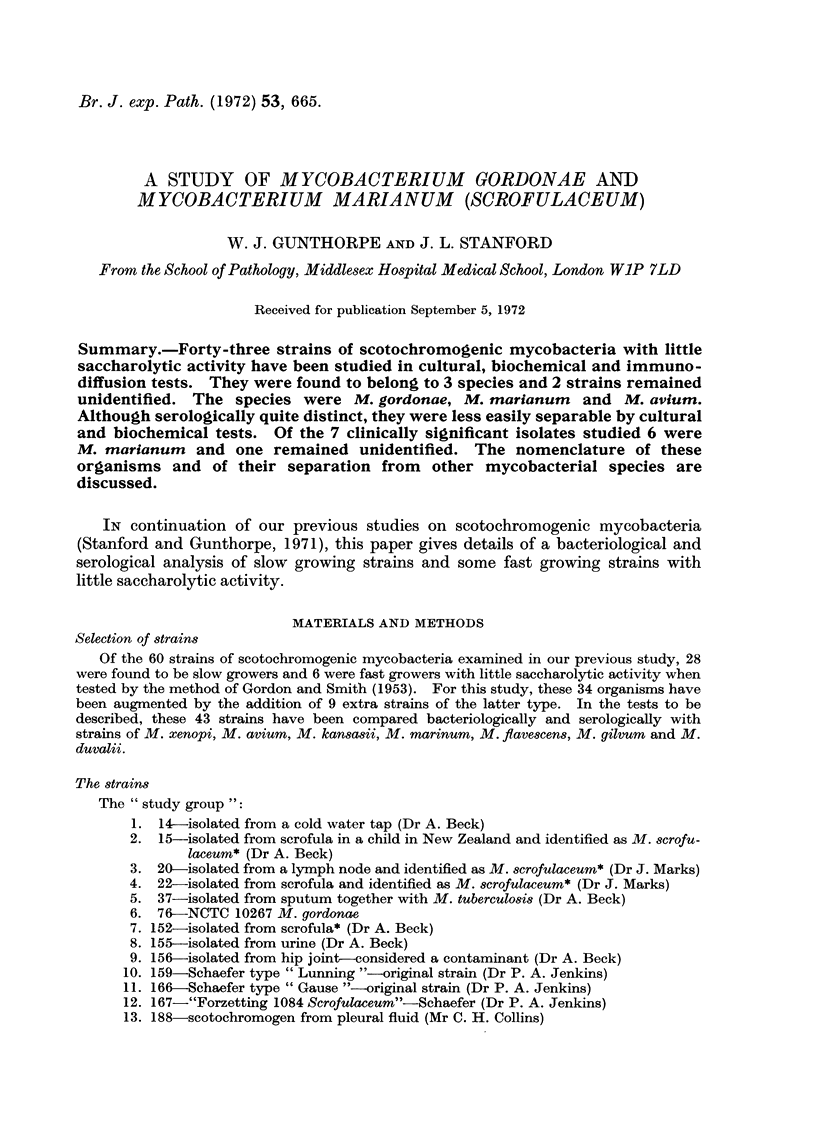

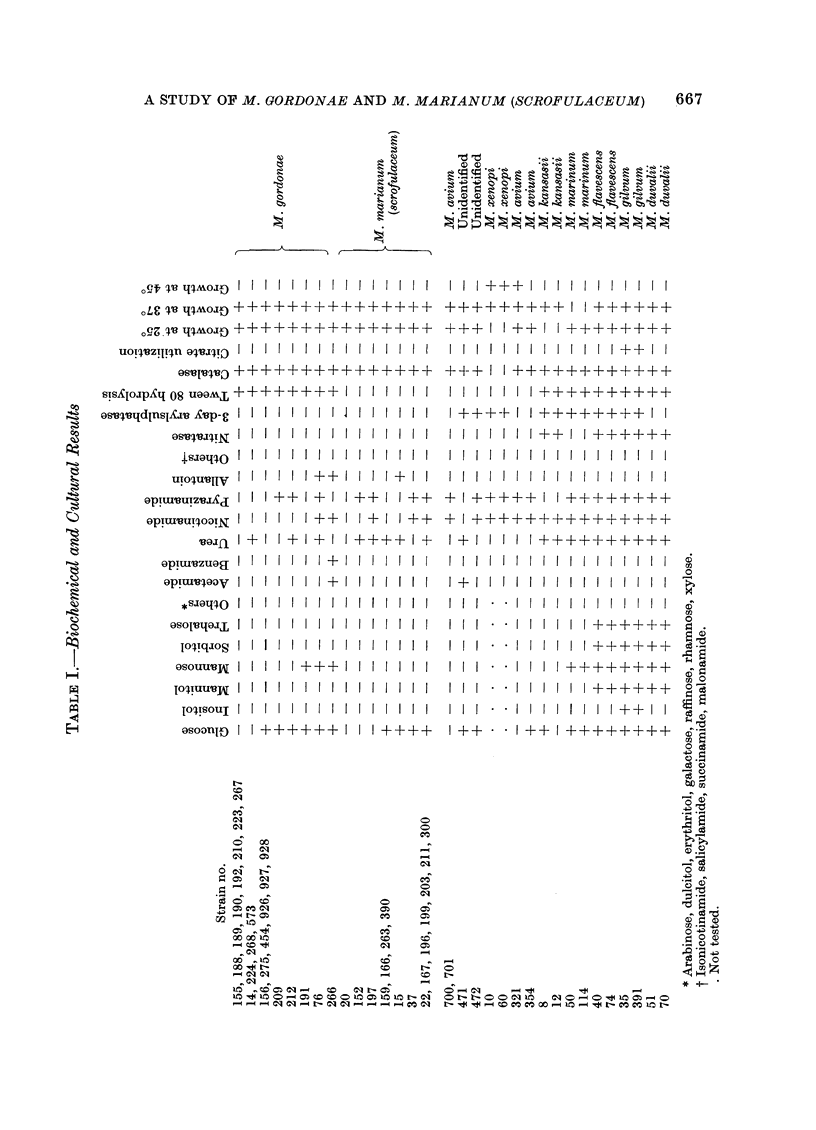
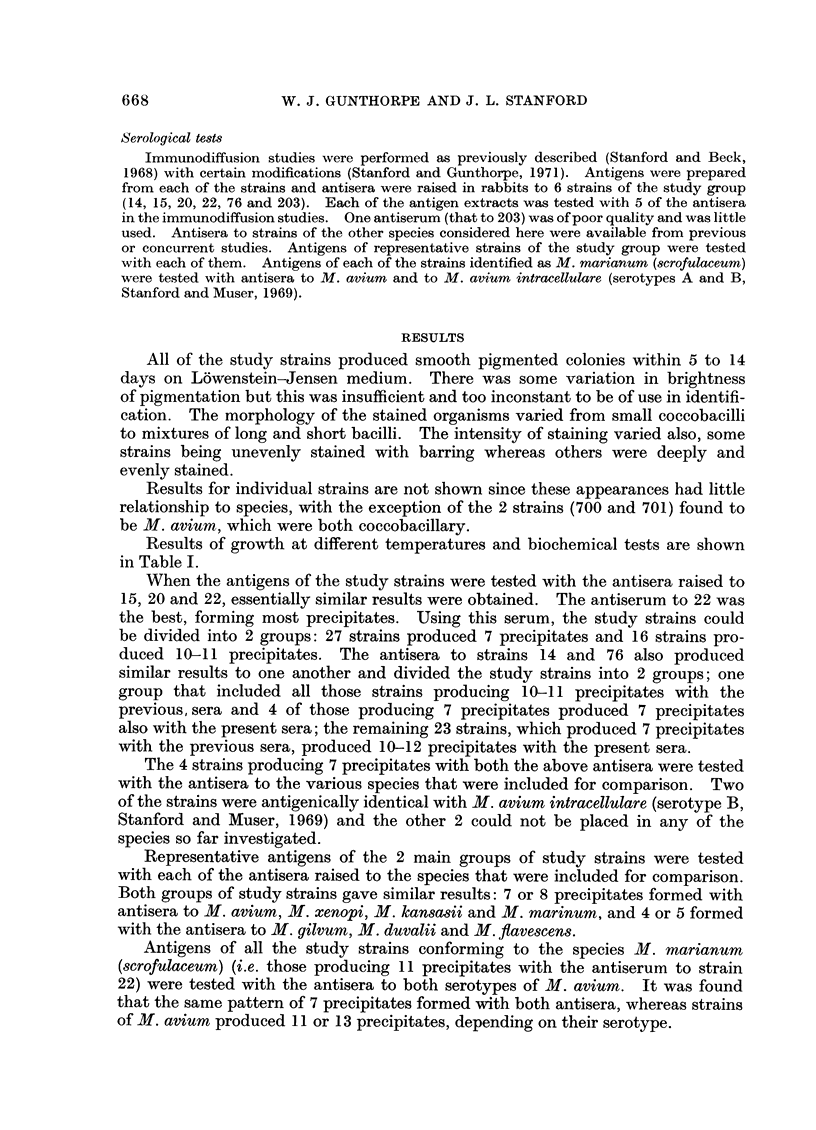
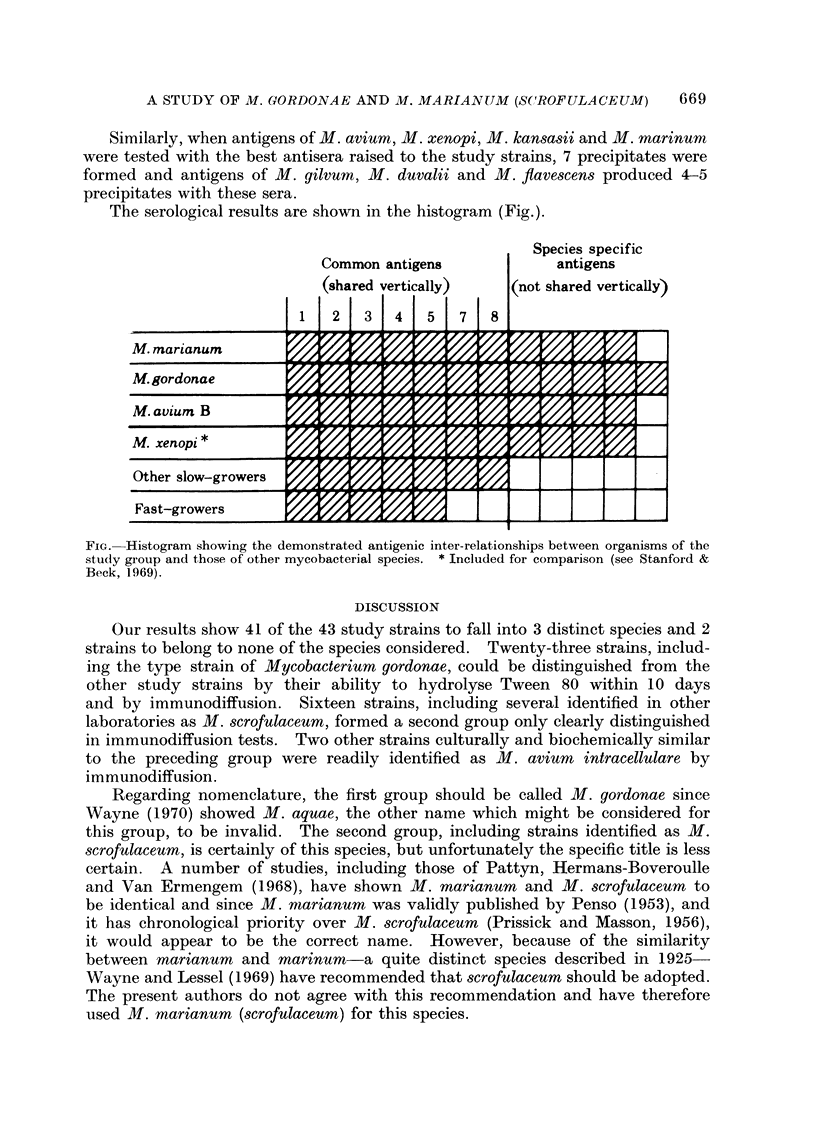
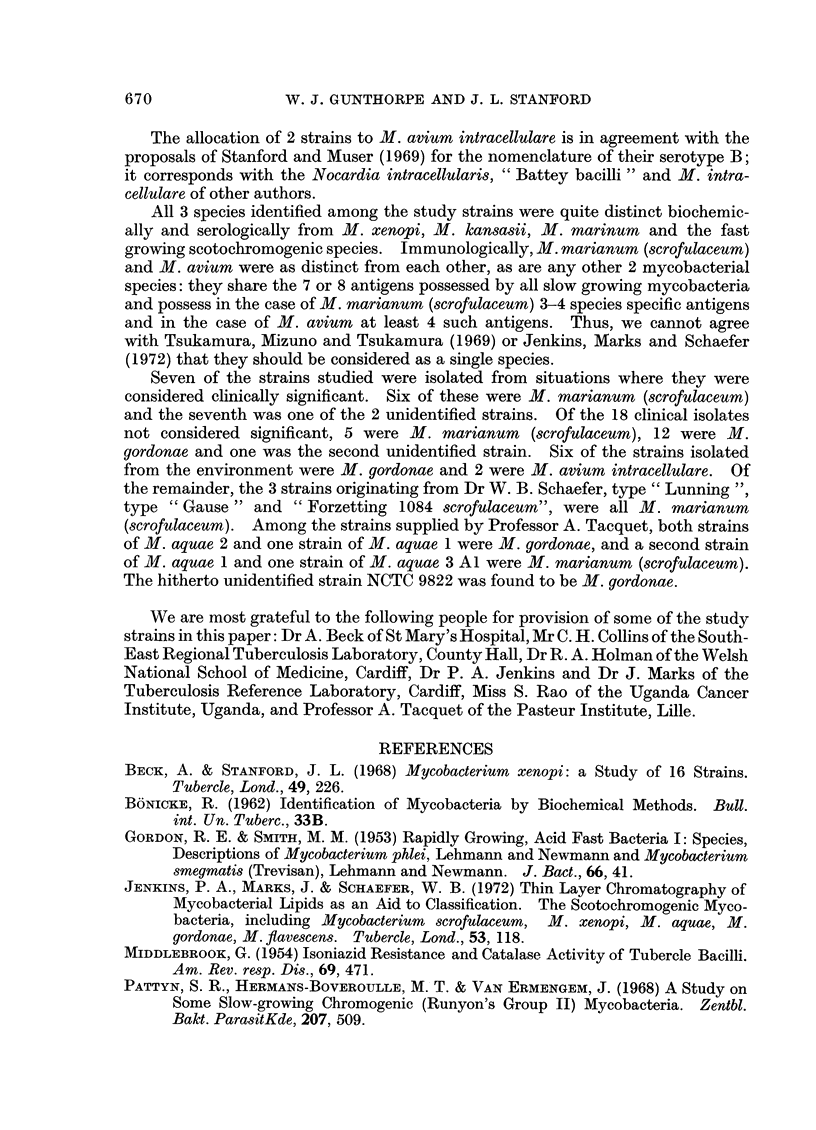
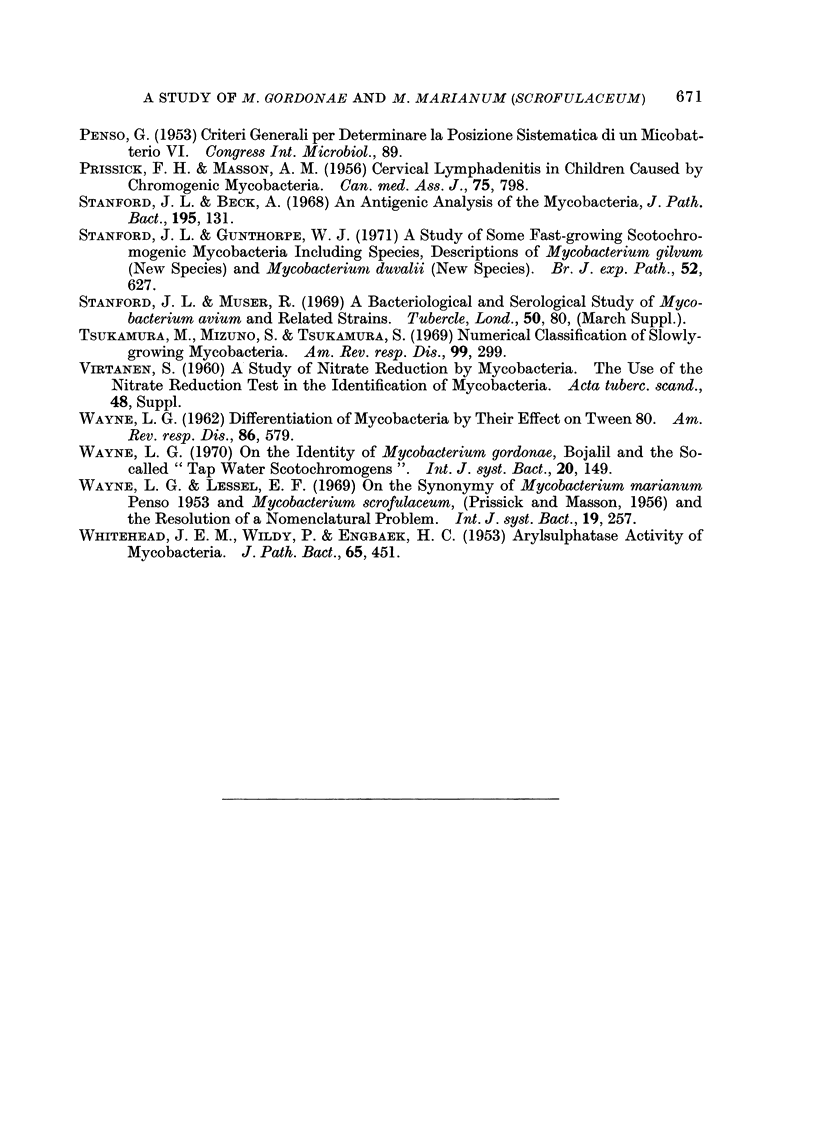
Selected References
These references are in PubMed. This may not be the complete list of references from this article.
- GORDON R. E., SMITH M. M. Rapidly growing, acid fast bacteria. I. Species' descriptions of Mycobacterium phlei Lehmann and Neumann and Mycobacterium smegmatis (Trevisan) Lehmann and Neumann. J Bacteriol. 1953 Jul;66(1):41–48. doi: 10.1128/jb.66.1.41-48.1953. [DOI] [PMC free article] [PubMed] [Google Scholar]
- Jenkins P. A., Marks J., Schaefer W. B. Thin-layer chromatography of mycobacterial lipids as an aid to classification: the scotochromogenic mycobacteria, including Mycobacterium scrofulaceum, M. xenopi, M. aquae, M. gordonae, M. flavescens. Tubercle. 1972 Jun;53(2):118–127. doi: 10.1016/0041-3879(72)90028-1. [DOI] [PubMed] [Google Scholar]
- MASSON A. M., PRISSICK F. H. Cervical lymphadenitis in children caused by chromogenic Mycobacteria. Can Med Assoc J. 1956 Nov 15;75(10):798–803. [PMC free article] [PubMed] [Google Scholar]
- MIDDLEBROOK G. Isoniazid-resistance and catalase activity of tubercle bacilli; a preliminary report. Am Rev Tuberc. 1954 Mar;69(3):471–472. doi: 10.1164/art.1954.69.3.471. [DOI] [PubMed] [Google Scholar]
- Pattyn S. R., Hermans-Boveroulle M. T., van Ermengem J. Untersuchungen an langsam wachsenden, scotochromatogenen Mykobakterien (Runyon Gruppe II) Zentralbl Bakteriol Orig. 1968;207(4):509–516. [PubMed] [Google Scholar]
- Stanford J. L., Beck A. An antigenic analysis of the mycobacteria, Mycobacterium fortuitum, Myco. kansasii, Myco. phlei, Myco. smegmatis and Myco. tuberculosis. J Pathol Bacteriol. 1968 Jan;95(1):131–139. doi: 10.1002/path.1700950116. [DOI] [PubMed] [Google Scholar]
- Stanford J. L., Gunthorpe W. J. A study of some fast-growing scotochromogenic mycobacteria including species descriptions of Mycobacterium gilvum (new species) and Mycobacterium duv alii (new species). Br J Exp Pathol. 1971 Dec;52(6):627–637. [PMC free article] [PubMed] [Google Scholar]
- Tsukamura M., Mizuno S., Tsukamura S. Numerical classification of slowly growing mycobacteria. Am Rev Respir Dis. 1969 Feb;99(2):299–303. doi: 10.1164/arrd.1969.99.2.299. [DOI] [PubMed] [Google Scholar]
- WAYNE L. G. Differentiation of mycobacteria by their effect on tween 80. Am Rev Respir Dis. 1962 Oct;86:579–581. doi: 10.1164/arrd.1962.86.4.579. [DOI] [PubMed] [Google Scholar]
- WHITEHEAD J. E., WILDY P., ENGBAEK H. C. Arylsulphatase activity of mycobacteria. J Pathol Bacteriol. 1953 Apr;65(2):451–460. doi: 10.1002/path.1700650217. [DOI] [PubMed] [Google Scholar]


